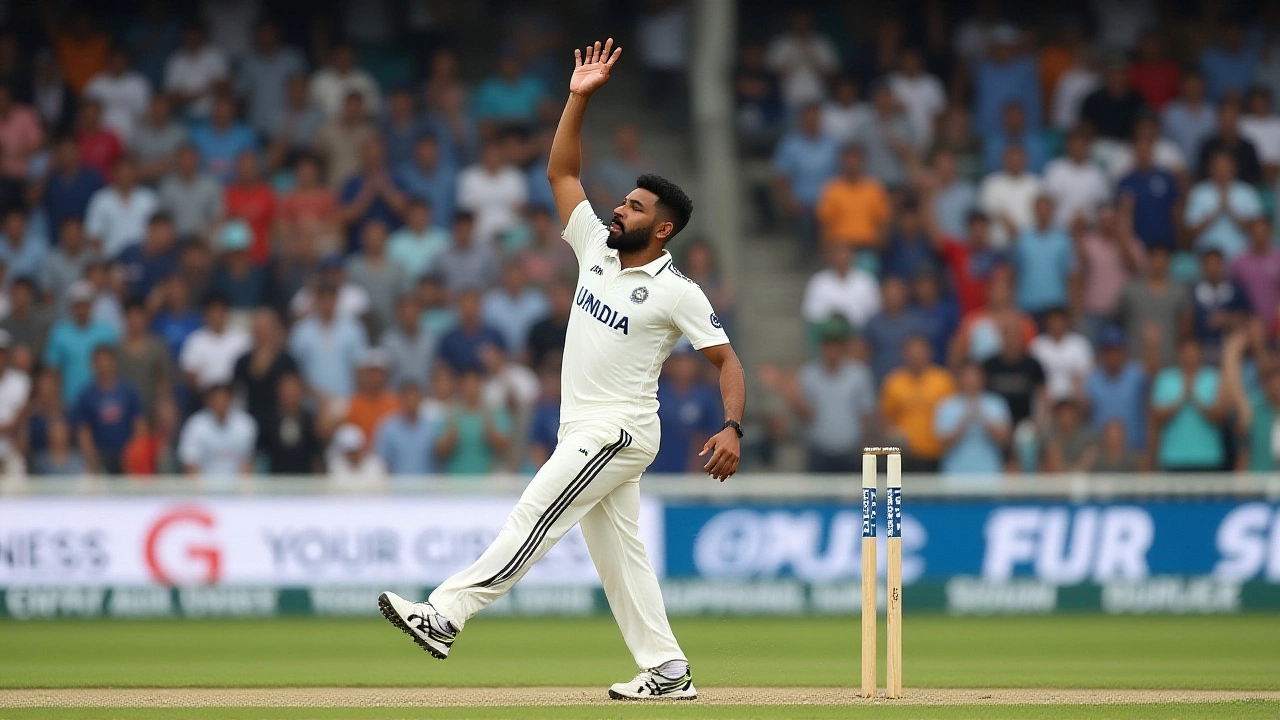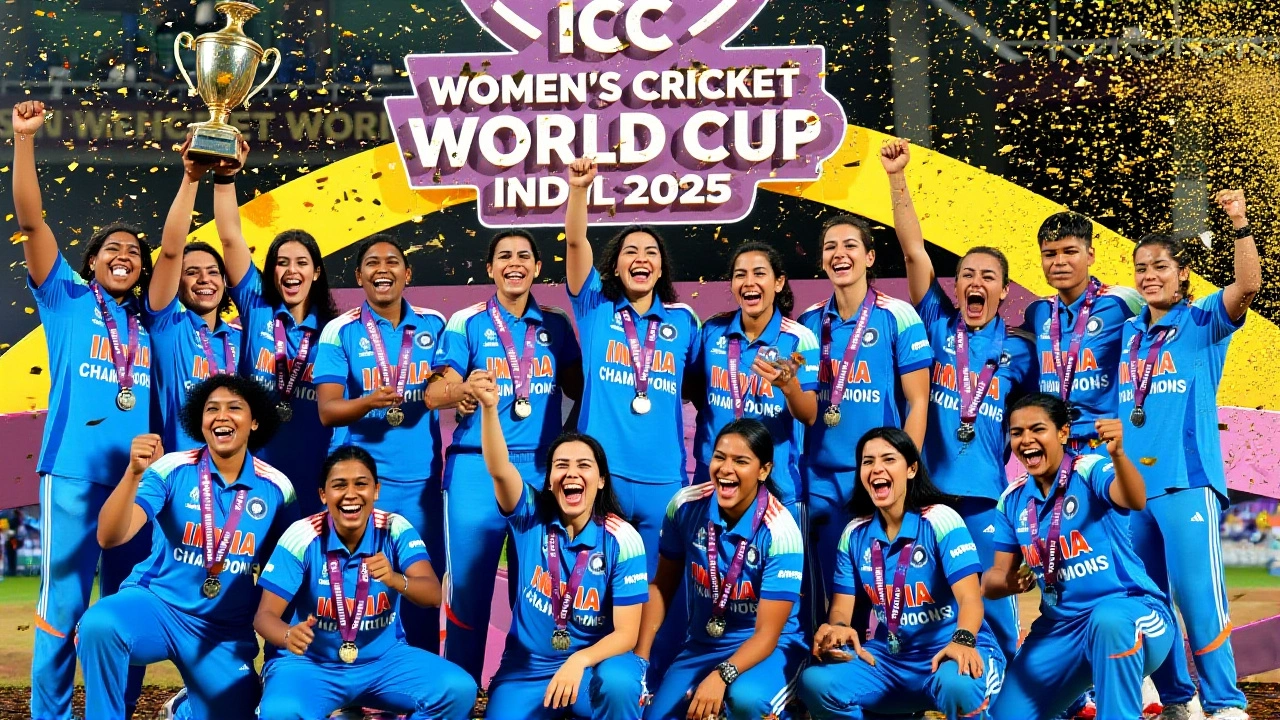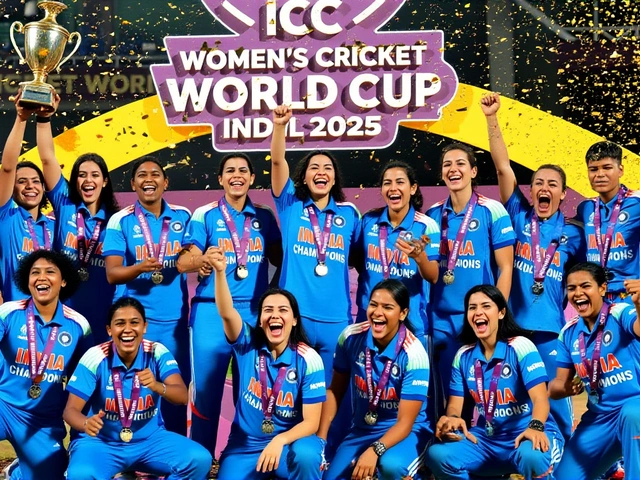India lifted their first-ever ICC Women's ODI World Cup trophy on October 19, 2025, crushing South Africa by 52 runs in front of a roaring home crowd at Navi Mumbai’s DY Patil Stadium. The victory wasn’t just a win—it was a seismic shift in global women’s cricket, ending decades of near-misses and silencing doubters who still saw India as perennial bridesmaids. At the heart of it all? Deepti Sharma, whose all-round masterclass—50 runs and a stunning 5-for-39 in 9.3 overs—turned the final into a personal coronation. South Africa fought valiantly, led by Laura Wolvaardt, who became the first captain in Women’s World Cup history to score a century in a final with 101 off 98 balls. But it wasn’t enough. India’s 298/7 proved too tall a mountain to climb.
A New Champion Emerges
For the first time since the tournament began in 1973, neither England nor Australia reached the final. The ICC called it "a different twist," and rightly so. Australia, defending champions, were stunned in the semi-final by India in a match that will be replayed for generations. Chasing 338 at Navi Mumbai, India posted 341/5 with nine balls to spare—the highest successful chase in Women’s ODI World Cup history. The two teams combined for 679 runs, setting a new tournament record. That game alone had more runs than the entire 2017 final between England and India. The pressure didn’t just break Australia—it broke the mold.
The Record-Breaking Tournament
This wasn’t just a final—it was a tournament of extremes. India and South Africa each smashed 35 sixes, leading the charts. Australia wasn’t far behind with 24. Combined, the top three teams hit close to 100 sixes. India’s 340/3 against New Zealand in the group stage was their highest innings of the tournament, and they still won by 53 runs via DLS. Meanwhile, England’s Heather Knight scored 109 against India in a nail-biting group match, but Deepti Sharma’s 4/51 ensured India edged past by four runs. Even the semi-final in Guwahati, where India beat New Zealand, had over 580 runs. The pitch wasn’t just flat—it was a batting paradise.
Deepti Sharma: The Unlikely Hero
Before this tournament, Deepti Sharma was known as a reliable all-rounder, not a match-winner on the grandest stage. But on October 19, she became the first woman in World Cup final history to score a fifty and take a five-wicket haul in the same game. Her dismissal of Nadine De Klerk—caught at deep mid-wicket after a desperate swipe—broke South Africa’s last real hope. "INDIA WIN BY 52 RUNS TO BE CROWNED CHAMPIONS! DEEPTI THE STAR OF THE GAME WITH A 50 AND FIFER!" blared the Board of Control for Cricket in India (BCCI)’s official statement. Her 50 came off just 56 balls, anchoring India after early wobbles. Then, with the ball, she picked up the key wickets of Wolvaardt, Marizanne Kapp, and Sune Luus in the death overs. She didn’t just play well—she played like a woman possessed.
South Africa’s Heartbreak and Honor
Wolvaardt’s century was historic, yes—but it was also bittersweet. South Africa had never reached a Women’s World Cup final before. Their journey through the tournament was built on grit, not glory. They beat West Indies by 12 runs in a tense group game, edged out Pakistan by 14 in a rain-affected match, and survived a scare against Sri Lanka. But in the final, their middle order collapsed under pressure. Shafali Verma’s blistering 87 off 78 balls set the tone, and when South Africa’s chase stalled at 180/6 in the 38th over, the writing was on the wall. Still, they played with pride. "We’re proud of how far we’ve come," said Wolvaardt after the match. "This isn’t the end—it’s just the beginning."

What This Means for Indian Cricket
India’s win changes everything. For years, the men’s team dominated headlines, while the women’s side struggled for funding, media attention, and public recognition. This victory didn’t just bring a trophy—it brought validation. The Board of Control for Cricket in India (BCCI) had already increased investment in the women’s program after the 2022 World Cup, but this? This is a cultural turning point. Stadiums in Delhi, Bengaluru, and Chennai are already reporting surging ticket demand for domestic women’s matches. Schoolgirls across Uttar Pradesh and Maharashtra are picking up bats, not just to play—but to dream. The BCCI’s statement, "Copyrights All right are reserved, BCCI 2025," may sound bureaucratic, but it carries weight: this win belongs to them now.
What’s Next?
The next Women’s World Cup is in 2029, hosted by South Africa. But the narrative has already flipped. Australia and England will be hunting for redemption. India? They’re no longer the underdogs. They’re the team to beat. Deepti Sharma is now a national icon. Shafali Verma, 21, has announced she’s working on a new power-hitting technique. And the BCCI? They’ve already hinted at launching a women’s IPL-style franchise league by 2027. The infrastructure is being built. The stars are aligned. The game has changed.
Frequently Asked Questions
How did India’s win impact women’s cricket funding in India?
The BCCI immediately announced a 40% increase in the women’s team’s annual budget, rising from ₹120 crore to ₹168 crore ($20 million USD). Player retainership packages have been raised by 50%, and state associations are now required to allocate at least 20% of their cricket budgets to women’s development. This is the largest financial commitment ever made to women’s cricket in India.
Who was the top run-scorer in the 2025 Women’s World Cup?
Shafali Verma led the tournament with 547 runs at an average of 60.77, including three centuries and two fifties. She surpassed Australia’s Alyssa Healy (512 runs) and England’s Nat Sciver-Brunt (489 runs). Her strike rate of 117.3 was the highest among top-10 scorers, cementing her as the most explosive opener in the game today.
Why was the India vs. Australia semi-final so significant?
That match produced 679 total runs—the highest in Women’s ODI World Cup history, surpassing the previous record of 678 set in 2017. India’s chase of 338 was the highest successful run chase in the tournament’s history. It also marked the first time Australia had lost a World Cup semi-final since 2005, ending their streak of five consecutive final appearances.
What records did Deepti Sharma set in the final?
Deepti Sharma became the first woman to score a fifty and take a five-wicket haul in the same Women’s World Cup final. She also became the first Indian woman to take a five-wicket haul in a World Cup final. Her 5/39 is the best bowling figures by an Indian woman in any World Cup final, and her all-round performance is now ranked among the top three in the history of the tournament.
How does this compare to India’s previous World Cup performances?
India had reached the final twice before—in 2005 and 2017—but lost both times to Australia and England, respectively. In 2005, they were bowled out for 143. In 2017, they lost by nine runs in a dramatic final. This win ends a 20-year wait and transforms their legacy from "nearlys" to champions. For the first time, India has a Women’s World Cup trophy to match the men’s 2011 triumph.
What role did the home crowd play in India’s victory?
Over 82,000 fans packed Navi Mumbai’s stadium across the final week, creating a wall of noise that disrupted South Africa’s batting rhythm. The BCCI reported a 300% surge in live viewership compared to the 2022 final. Players said they could hear every cheer, even during tense overs. The home advantage wasn’t just psychological—it was physical, with bowlers feeding off the energy to deliver crucial spells under pressure.

